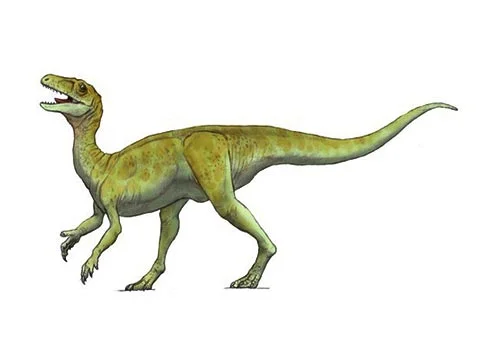Guaibasaurus (Guaiba lizard)

Gu-ay-bah-sore-us
J. F. Bonaparte, J. Ferigolo, and A. M. Ribeiro - 1999
Carnivore/Omnivore
Estimated 1.5 meters long
Small Theropod
G. candelariensis (type)
Brazil
Late Triassic, 225 million years ago
Guaibasaurus Facts
Guaibasaurus is a genus of small dinosaur that lived in what is now Brazil during the Late Triassic period, around 225 million years ago. It was first discovered in the Santa Maria Formation in the state of Rio Grande do Sul, which is known for its rich fossil record of early dinosaurs and other reptiles.
Guaibasaurus was a small bipedal dinosaur, measuring only about 1.5 meters (5 feet) in length and weighing around 15 kilograms (33 pounds). It belonged to the family Silesauridae, a group of early dinosaurs that were closely related to the direct ancestors of birds.
The skeleton of Guaibasaurus is incomplete, but what has been found suggests that it had a number of unique features. For example, it had a relatively long and slender skull with a number of small teeth, and its shoulder girdle was very different from that of other early dinosaurs, indicating that it may have had a more agile and flexible arm and hand.
Guaibasaurus likely lived in a forested environment and may have been a generalist feeder, eating a variety of plants and small animals. It may have been preyed upon by larger carnivorous dinosaurs and other predators, such as rauisuchians, that also lived in the area.
Despite its small size and relatively short lifespan, Guaibasaurus is an important part of the story of early dinosaur evolution. Its unique combination of features suggests that it was a transitional form between early dinosaurs and the ancestors of birds, and it provides valuable insights into the process of how dinosaurs evolved and diversified over millions of years.



